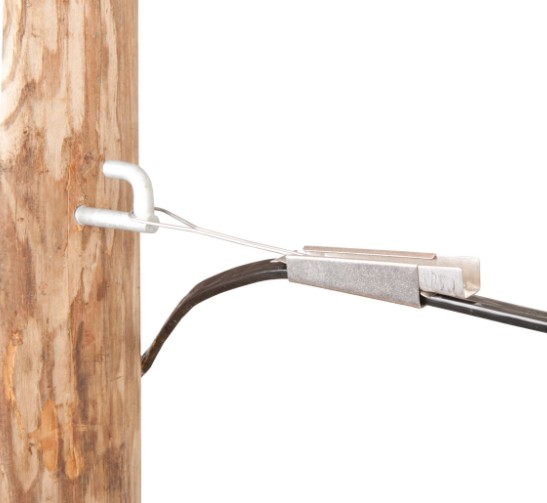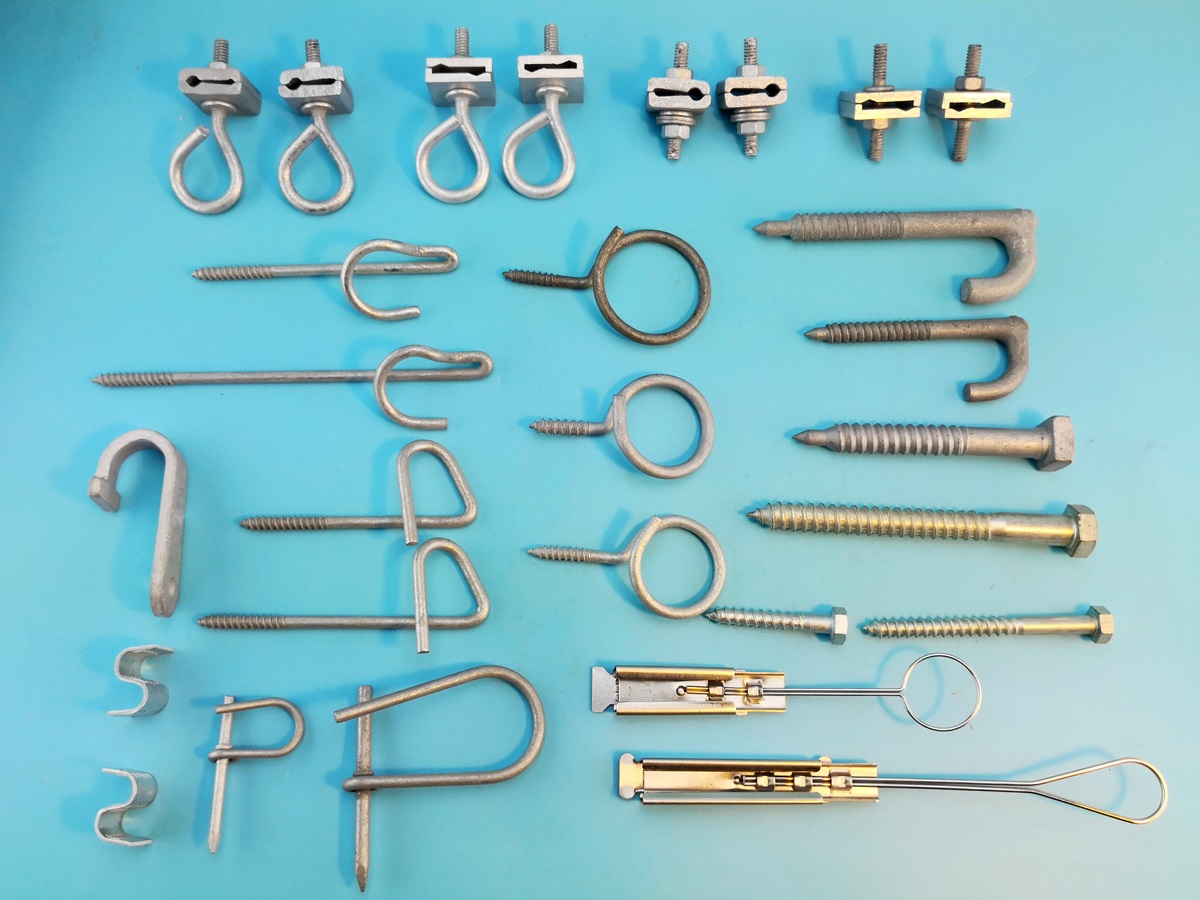Aerial drop hardware refers to the equipment and components used in the installation and deployment of aerial drops in telecommunication networks.
An aerial drop is a physical connection between a utility pole or other support structure and a customer's premises, typically used to provide services like telephone, internet, or cable TV. The aerial drop hardware includes various components such as: Stainless Steel Band: The band that carries the signals from the main distribution network to the customer's premises. It is usually a coaxial cable or fiber optic cable.
Stainless Steel Band: The band that carries the signals from the main distribution network to the customer's premises. It is usually a coaxial cable or fiber optic cable.
Drop Wire Clamp: Drop Wire Clamp is used to support one and two pair telephone or fiber drop wire at span clamps, drive hooks, house hooks and various drop attachments. Made from 3 pieces stainsteel removable construction, Dimpled, Serrated and Plastic shim are available.
Anchoring hardware: Hardware used to secure the aerial cable and drop wire to the support structure, such as clamps, brackets, or hooks.
Suspension hardware: Hardware used to support the weight of the aerial cable and maintain its proper tension, such as suspension clamps or brackets.
Splitters, connectors, and terminations: Components used to split or combine signals, connect different sections of cable, or terminate the cable at the customer's premises.
Cable Lashing Clamp used for securing lashing wire at end of span.
Acetal Strap Cable Ties made by toughened weather acetal. Temperature Range:
-40℃ to 85℃. Black colour, general packing in 50 feet length, can cut the strap at different length in practice. The Double Locking Heads and Tool are available.
YokeLink Stainless steel Banding have high acid resistance, corrosion resistance and tensile strength, easy and convenient operation.
These hardware components are designed to provide a secure and reliable connection for the transmission of signals between the service provider's network and the customer's premises.

Aerial Drop Hardware, Aerial, drop, Drop Wire Clamp, Staple,Locking Heads,Acetal Strap Cable Ties,Buckle,tensile,strength,Banding,Stainless Steel,mid-span
Ningbo Yokelink Machinery Co.,Limited , https://www.yokelink.com